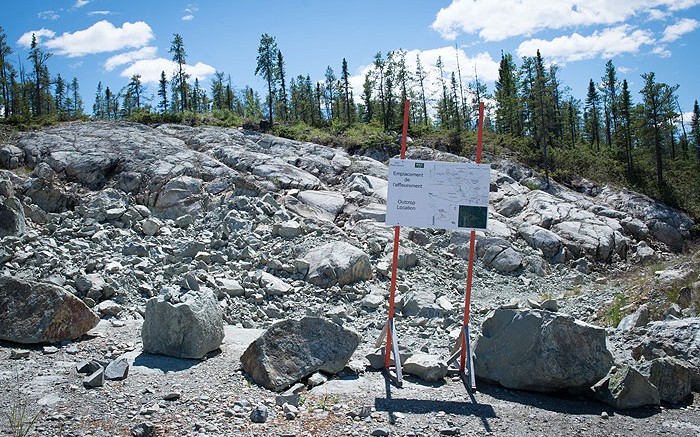Royal Nickel Corp. (TSX: RNX), also known as RNC, is taking advantage of the low commodity prices to transform into a multi-asset producer of nickel, gold and copper.
RNC, the owner of the large Dumont nickel project in Quebec, is buying 67% of private firm Salt Lake Mining Pty, whose main asset is the Beta Hunt nickel-gold mine in the Kambalda district of Western Australia. It is also acquiring VMS Ventures (TSXV: VMS) for its 30% interest in the Reed copper mine, near Flin Flon, Man. Hudbay Minerals (TSX: HBM; NYSE: HBM) is Reed’s 70% owner.
“The key thing here is that we are picking up operations, which are cash-generating and provide leverage exposure for investors to nickel, copper and gold,” CEO Mark Selby said on a conference call.
Salt Lake shareholders will receive 32.5 million RNC shares and $2.5 million in cash, while VMS will get 36 million RNC shares, $3.5 million in cash, and the payment of a dividend in kind of roughly 30 million North American Nickel (TSX: NAN) shares, currently held by VMS.
The acquisitions will transform RNC into a cash-generating metals producer from a single-asset junior, struggling to fund its flagship nickel project, amid low nickel prices. A 2013 feasibility study for Dumont estimates start-up costs at US$1.2 billion, with total costs for the expected 33-year life mine of US$2.8 billion. The study used a long-term nickel price of US$9 per lb. Spot nickel has recently been trading at US$3.80 per lb.
Although the low-price environment makes it difficult to finance capital-intensive projects, it also provides good buying opportunities, particularly near the bottom of a commodity cycle.
“The mining industry is a cyclical business, and everybody seems to forget it is cyclical at the top, and they go off and do a bunch of stupid deals … and at the bottom, they go into hiding,” Selby said in an interview. “Today, both those assets were attractive and will generate attractive returns on investments. So it was the right time to pick them up.”
In 2015 — on a 100% basis for Beta Hunt and 30% basis for Reed — the two operations produced 4,000 tonnes of nickel, 4,000 tonnes of copper and 3,300 oz. gold.
This year they should churn out 3,500 to 4,500 tonnes of nickel, 4,000 to 4,500 tonnes of copper and 35,000 to 45,000 oz. gold, as production at Beta Hunt ramps up.
Of note, 2016 cash costs at Beta Hunt should come in between zero and negative US$1 per lb. nickel, on a by-product basis. On a co-product basis, estimated all-in sustaining costs are US$3.75 to US$4.25 per lb. nickel and US$800 to US$900 per oz. gold for 2016.
Last December, Hudbay reported the high-grade Reed mine has an estimated 4-year mine life. On a 100% basis, it should generate 15,000 tonnes of copper a year at cash costs of $1.64 per lb. The deposit remains open at depth.
Beta Hunt (on a 100% basis) has the potential to generate US$10 million in cash flow in 2016, and if nickel prices rebound to US$5 per lb., “you are looking at (US)$20 million of cash flow,” Selby told analysts on the call.
Reed produced roughly $4 million in cash flow last year and should generate roughly the same this year, Selby added.
This is based on the fact VMS repaid $4.3 million of the contribution loan, comprising its 30% share of Reed’s development costs incurred by Hudbay, using cash flow from the mine last year, Rob Buchanan, RNC’s director of investor relations, said in an email.
Selby explains a portion of the cash flow will go towards repaying debt at the mines, totaling roughly $36 million— $16 million at Beta Hunt and $20 million at Reed.
RNC intends to refinance the current facility at Beta Hunt, which is paid in nickel and gold, so it could start generating cash in the fourth quarter, and depending on copper prices could repay the VMS debt as “early as 2017 or as late as the end of 2018,” Selby says.
Meanwhile, RNC intends to file a preliminary economic assessment for Beta Hunt within 45 days, and will likely complete a feasibility study later this year to incorporate the ongoing drilling.
That said, Selby notes the Dumont project remains the company’s focus. RNC plans to publish a fixed cost estimate for 70% of the project’s capital by the end of March.
Given the 2013 feasibility study used a long-term oil price of US$90 per barrel and long-term Canadian-U.S. exchange rate of US90¢, RNC is “cautiously optimistic” that capital costs will improve, as both inputs have significantly dropped, partially offsetting the lower nickel price. It will make a decision on whether to update Dumont’s feasibility later this year.
RNC has a mandate with Norway’s Swedbank for a US$600 million bond financing for Dumont. Selby explains once nickel prices firmly recover, the company will market the bond financing. But, before that could happen, the long-term nickel price assumption would have to be in the US$6 to US$7 per lb. range, he says. Scotiabank estimates nickel prices could hit US$6 per lb. in 2017.
Meanwhile, RNC will continue to look for other base metal and precious metal assets to acquire. “We are not so focused on a particular geography or metal. At the end of the day … what matters most is to pick those investments that we think will generate the best returns for our shareholders,” Selby said.
Both the Beta Hunt and Reed transactions should close in March.
The company ended Feb. 2 at 21¢ per share, up a combined 31% since announcing the acquisitions a day earlier.


Be the first to comment on "Royal Nickel to become a cash-generating producer"